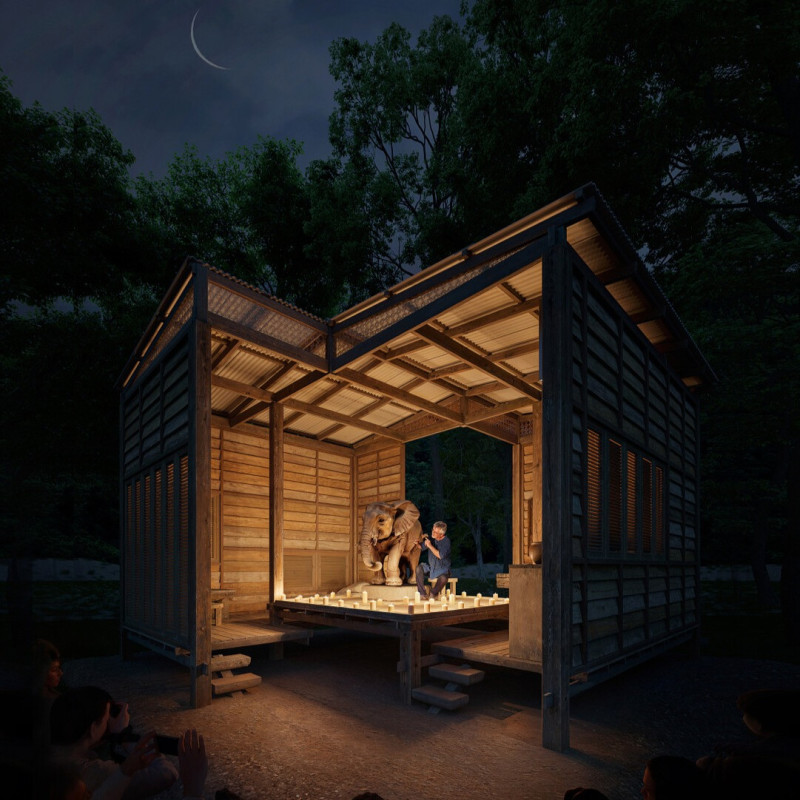5 key facts about this project
At first glance, the design showcases a commitment to clarity and purpose, characterized by carefully selected materials and a coherent layout. The façade employs a mixture of reinforced concrete and glass, striking a balance between solidity and transparency. This material choice not only enhances structural performance but also integrates the surrounding landscape into the experience of the building. Generous window placements encourage natural light to flood the interior spaces, while strategically positioned overhangs protect against excessive solar gain, demonstrating an understanding of environmental factors.
Inside, the architectural plan emphasizes functionality and flow. Open communal areas invite social interaction, with spaces carefully arranged to foster engagement among users. The integration of natural elements—such as indoor gardens or living walls—connects inhabitants with the outside world while promoting well-being through biophilic design principles. Individual spaces cater to various needs, from quiet areas for reflection to collaborative zones that support teamwork and innovation.
Unique design approaches are woven throughout the project. One noteworthy aspect is the incorporation of adaptive building systems that respond to real-time environmental conditions. These features contribute to energy efficiency, lowering the building's carbon footprint while providing a comfortable atmosphere for its users. The use of sustainable materials further reinforces this commitment, ensuring that the construction process aligns with environmentally responsible practices.
The architectural design integrates various dimensions that enhance its functionality and aesthetic appeal. Elements such as distinctive rooflines or playful geometries may be employed not simply for visual interest but also as functional components that enhance the overall user experience. Outdoor spaces are carefully considered, providing areas for relaxation and recreation that enhance the building's role in the community. The landscaping around the project complements its architecture, creating an inviting environment that encourages exploration and gathering.
Moreover, the architectural vision underlying this project aims to reflect local culture and identity, drawing on historical references and regional materials whenever possible. This respectful dialogue with the past gives the building a sense of place, allowing it to engage meaningfully with the community it serves. The project embodies a spirit of inclusivity and accessibility, evident in its design which ensures that all individuals can interact with and benefit from the space.
Through these various lenses of analysis, it becomes clear that this architectural project transcends mere physical construction; it represents a holistic approach to design that considers the intricate relationship between the built environment, its users, and the surrounding context. Its thoughtful execution serves not only to fulfill the immediate functional needs of its occupants but also to establish a meaningful presence within the community.
For those interested in exploring this project more deeply, examining the architectural plans, sections, and detailed designs will provide valuable insights into the design process and architectural ideas that shaped this endeavor. Engaging with this project through its detailed presentation can shed light on how architecture can serve practical needs while fostering a sense of belonging and connection to a broader environment.


























